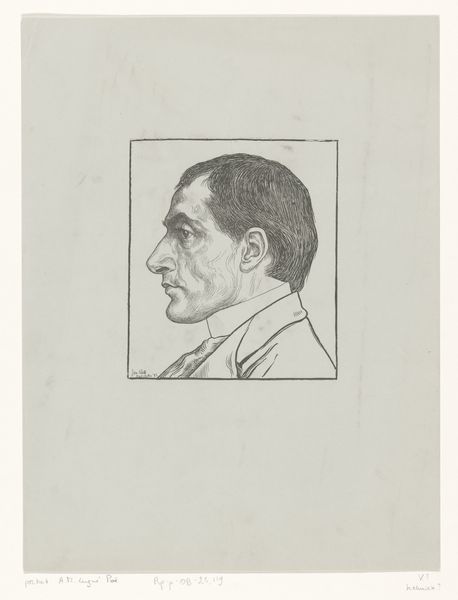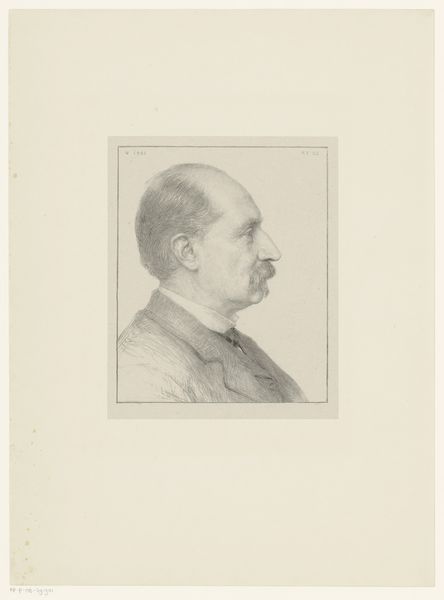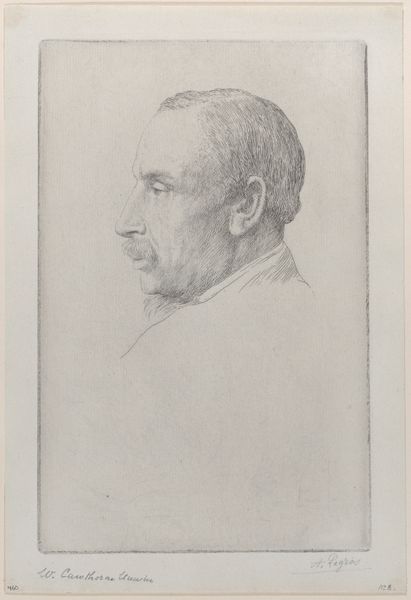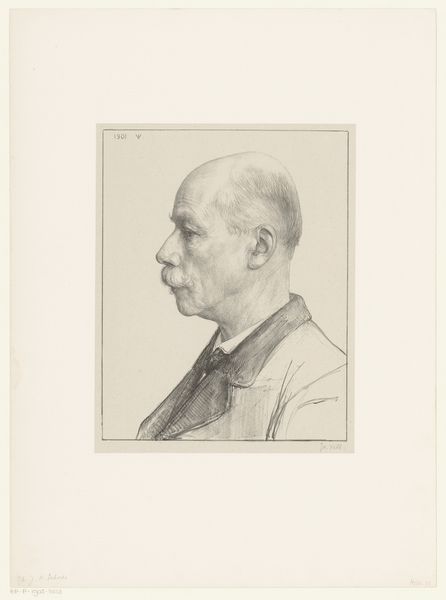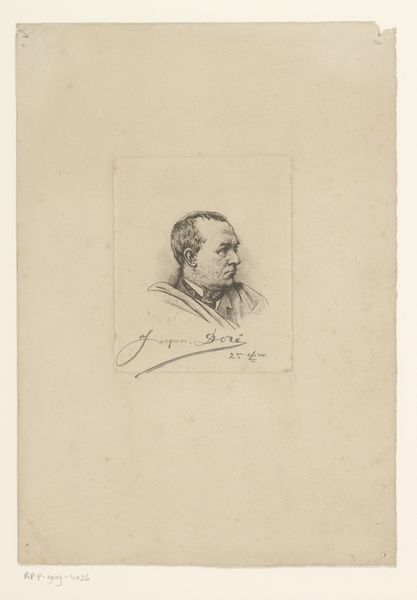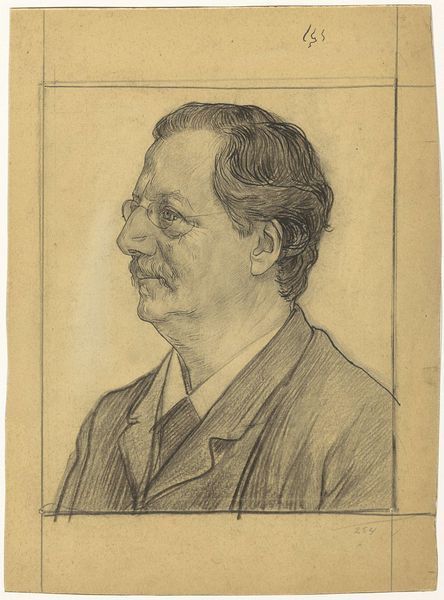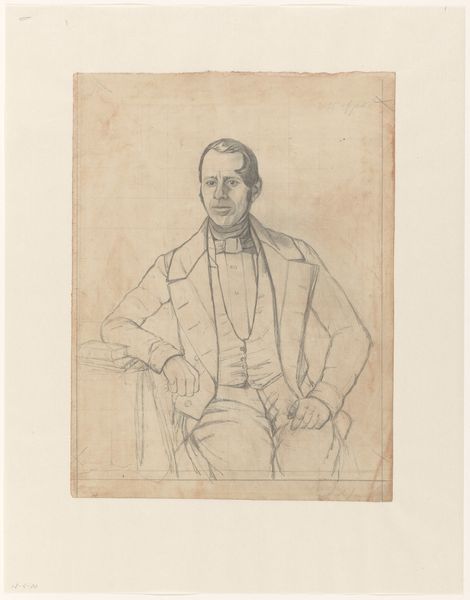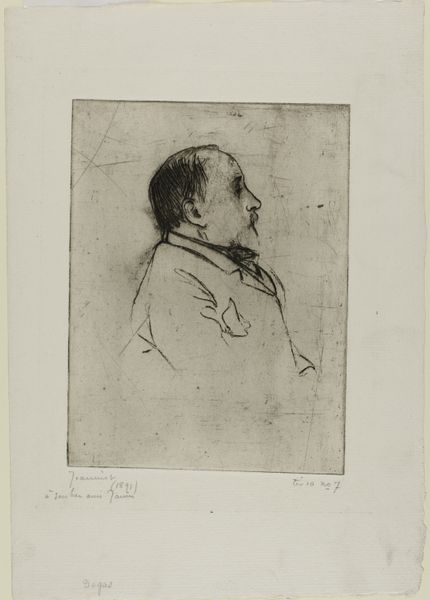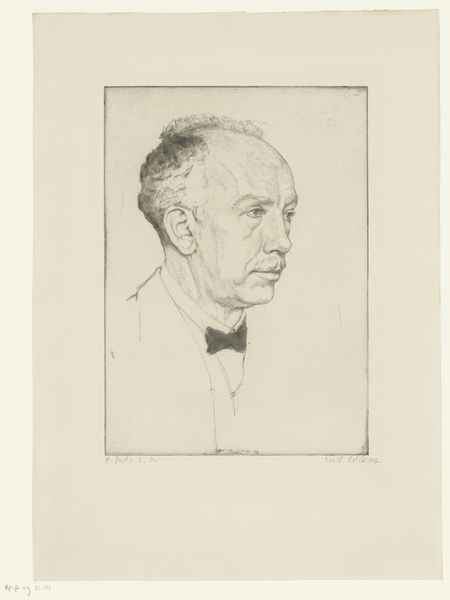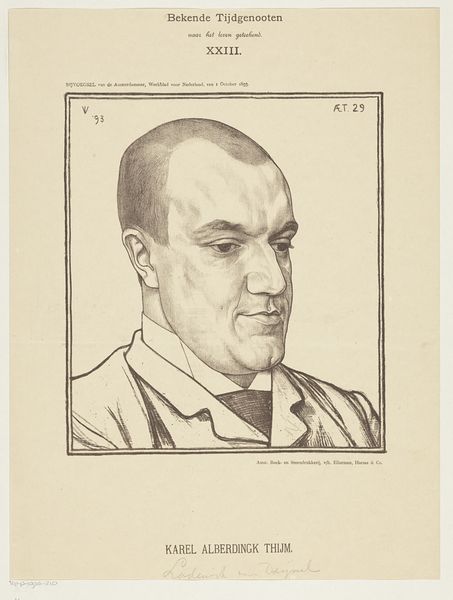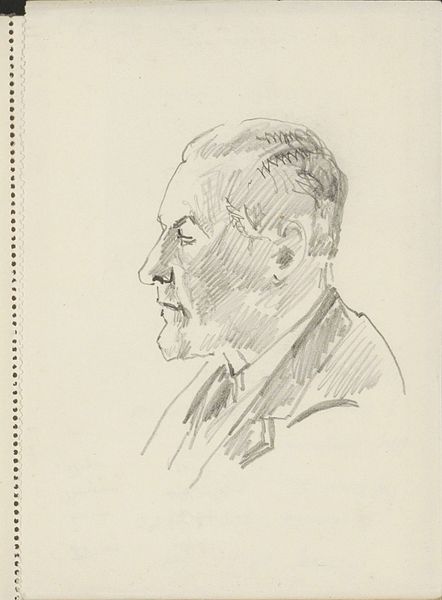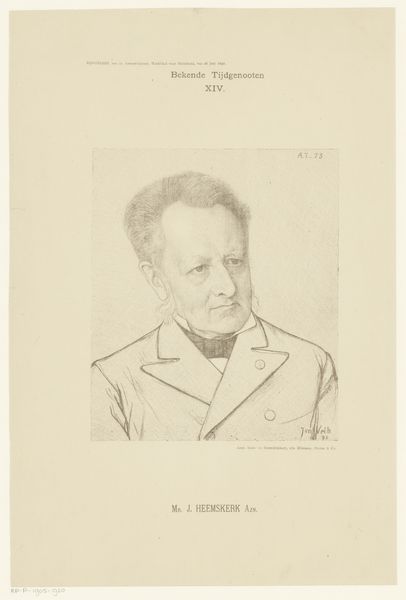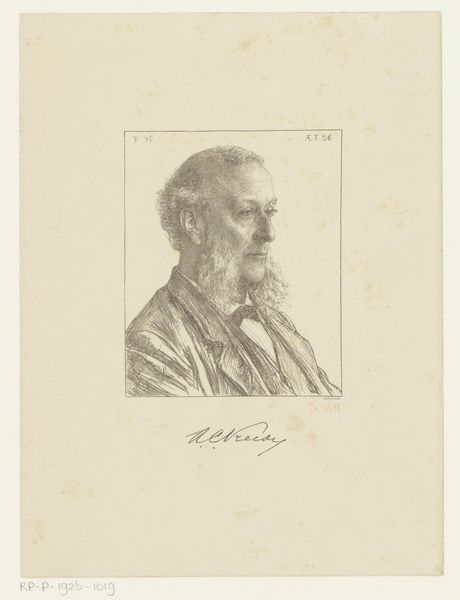
drawing, print, etching, graphite
#
portrait
#
drawing
# print
#
etching
#
caricature
#
graphite
#
portrait drawing
#
realism
Dimensions: height 483 mm, width 318 mm
Copyright: Rijks Museum: Open Domain
Curator: Here we have Jan Veth's "Portrait of Charles Boissevain" from 1893, residing here at the Rijksmuseum. A masterful drawing rendered through etching, graphite, and printmaking. Editor: There's something strikingly stark about the line work. It creates an almost uncomfortable intensity in the sitter's gaze, wouldn't you say? It feels more than just representational. Curator: Indeed. Veth’s understanding of form through line is exceptionally rigorous here. The precision allows a very keen exploration of physiognomy, the structural planes of the face defined by meticulous hatching and cross-hatching. Look how the lines become darker and denser in areas that need greater shadowing or definition. Editor: That meticulous layering suggests a deep investment in the labour of representation itself. We often forget the repetitive physical action involved in creating etched lines; it isn't merely about facile expression, but time, labor, and considered pressure brought to bear upon the plate, and, ultimately, on Boissevain's social standing. Curator: Exactly. The composition too—the tight framing and profile view—direct the gaze straight toward the details of his character, so clearly defined. His intellect appears quite pronounced. Editor: Although the square frame itself and Veth’s signature introduce an interesting, conflicting structure to the piece that wasn't traditionally honored or celebrated. Was he intentionally attempting to democratize portraiture by allowing the subject to dictate material process and structure, which were traditionally for high class citizens and religious idols? Curator: An astute observation. Perhaps that boundary erosion between subject, material, and status is deliberate. It would certainly fit with some of the sociopolitical undercurrents that circulated in intellectual Dutch circles at the time. The etching is realism personified. Editor: It really does give a potent impression of the moment. Considering how art history canonized painting and sculpture at the time, it gives you insight into Veth's decision to focus on working and elevating the crafts of drawing, graphite and printmaking. It opens our view to all types of materials and what "artwork" represents. Curator: Agreed. "Portret van Charles Boissevain" really showcases how method can reinforce concept, even to the modern eye. Editor: It’s amazing to observe how much meaning material application can hold and provide in the study of this particular subject and era of production.
Comments
No comments
Be the first to comment and join the conversation on the ultimate creative platform.
